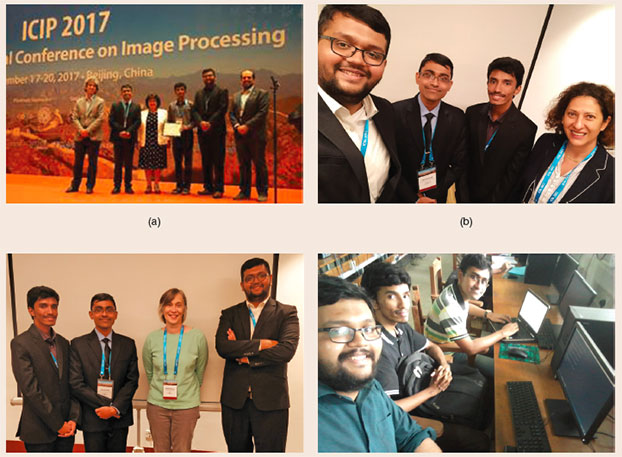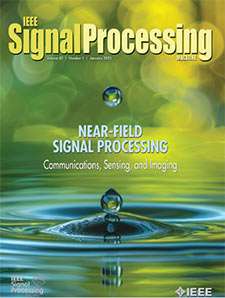- Our Story
- Publications & Resources
- Publications & Resources
- Publications
- IEEE Signal Processing Magazine
- IEEE Journal of Selected Topics in Signal Processing
- IEEE Signal Processing Letters
- IEEE Transactions on Computational Imaging
- IEEE Transactions on Image Processing
- IEEE Transactions on Information Forensics and Security
- IEEE Transactions on Multimedia
- IEEE Transactions on Signal and Information Processing over Networks
- IEEE Transactions on Signal Processing
- IEEE TCI
- IEEE TSIPN
- Data & Challenges
- Submit Manuscript
- Guidelines
- Information for Authors
- Special Issue Deadlines
- Overview Articles
- Top Accessed Articles
- SPS Newsletter
- SigPort
- SPS Resource Center
- Publications FAQ
- Blog
- News
- Dataset Papers
- Conferences & Events
- Community & Involvement
- Professional Development
- For Volunteers
- Information for Authors-OJSP
-
Home
Conferences Events IEEE Signal Processing Magazine IEEE SPL Article IEEE TIFS Article IEEE TMM Article IEEE TSP Article Jobs in Signal Processing Lectures Machine Learning Seasonal Schools Signal Processing News SPM Article SPS Distinguished Lectures SPS Newsletter Article SPS Webinar SPS Webinars SPS Webinar Series Webinar webinars
-
Our Story
What is Signal Processing?

The technology we use, and even rely on, in our everyday lives –computers, radios, video, cell phones – is enabled by signal processing. Learn More » -
Publications & Resources
-
SPS Resources
- Signal Processing Magazine The premier publication of the society.
- SPS Newsletter Monthly updates in Signal Processing
- SPS Resource Center Online library of tutorials, lectures, and presentations.
- SigPort Online repository for reports, papers, and more.
- SPS Feed The latest news, events, and more from the world of Signal Processing.
-
SPS Resources
-
Conferences & Events
-
Community & Involvement
-
Membership
- Join SPS The IEEE Signal Processing Magazine, Conference, Discounts, Awards, Collaborations, and more!
- Chapter Locator Find your local chapter and connect with fellow industry professionals, academics and students
- Women in Signal Processing Networking and engagement opportunities for women across signal processing disciplines
- Students Scholarships, conference discounts, travel grants, SP Cup, VIP Cup, 5-MICC
- Young Professionals Career development opportunities, networking
- Get Involved
-
Technical Committees
- Applied Signal Processing Systems
- Audio and Acoustic Signal Processing
- Bio Imaging and Signal Processing
- Computational Imaging
- Image Video and Multidimensional Signal Processing
- Information Forensics and Security
- Machine Learning for Signal Processing
- Multimedia Signal Processing
- Sensor Array and Multichannel
- Signal Processing for Communication and Networking
- Signal Processing Theory and Methods
- Speech and Language Processing
- Technical Working Groups
- More TC Resources
-
Membership
-
Professional Development
-
Professional Development
- Signal Processing Mentorship Academy (SigMA) Program
- Micro Mentoring Experience Program (MiME)
- Distinguished Lecturer Program
- Distinguished Lecturers
- Distinguished Lecturer Nominations
- Past Lecturers
- Distinguished Industry Speaker Program
- Distinguished Industry Speakers
- Distinguished Industry Speaker Nominations
- Industry Resources
- IEEE Training Materials
- Jobs in Signal Processing: IEEE Job Site
-
Career Resources
- SPS Education Program Educational content in signal processing and related fields.
- Distinguished Lecturer Program Chapters have access to educators and authors in the fields of Signal Processing
- Job Opportunities Signal Processing and Technical Committee specific job opportunities
- Job Submission Form Employers may submit opportunities in the area of Signal Processing.
-
Professional Development
-
For Volunteers
-
For Board & Committee Members
- Board Agenda/Minutes* Agendas, minutes and supporting documentation for Board and Committee Members
- SPS Directory* Directory of volunteers, society and division directory for Board and Committee Members.
- Membership Development Reports* Insight into the Society’s month-over-month and year-over-year growths and declines for Board and Committee Members
-
For Board & Committee Members
Popular Pages
Today's:
- Information for Authors
- (ASRU 2025) 2025 IEEE Automatic Speech Recognition and Understanding Workshop
- IEEE Transactions on Information Forensics and Security
- Information for Authors-SPL
- IEEE Transactions on Image Processing
- Submit a Manuscript
- IEEE JSTSP Special Issue on Advancing Signal Processing Algorithm for Fluid Antenna Systems (FAS)
- IEEE Signal Processing Letters
- IEEE Transactions on Multimedia
- Unified EDICS
- Call for Papers for ICASSP 2026 Now Open!
- IEEE JSTSP Special Issue on Advanced AI and Signal Processing for Low-Altitude Wireless Networks
- Guidelines
- Awards & Submit Award Nomination
- (ICME 2026) 2026 IEEE International Conference on Multimedia and Expo
All time:
- Information for Authors
- Submit a Manuscript
- IEEE Transactions on Image Processing
- IEEE Transactions on Information Forensics and Security
- IEEE Transactions on Multimedia
- IEEE Transactions on Audio, Speech and Language Processing
- IEEE Signal Processing Letters
- IEEE Transactions on Signal Processing
- Conferences & Events
- IEEE Journal of Selected Topics in Signal Processing
- Information for Authors-SPL
- Conference Call for Papers
- Signal Processing 101
- IEEE Signal Processing Magazine
- Guidelines
Last viewed:
- Membership
- IEEE Signal Processing Cup 2020
- Member Highlights: Satoshi Nakamura
- Members
- Regional Directors-at-Large Membership Development
- Conference Resources
- Sensor Array and Multichannel (SAM) TC Activities
- (ISBI 2026) 2026 IEEE 23rd International Symposium on Biomedical Imaging
- 2025 21st International Symposium on Biomedical Image Processing and Analysis (SIPAIM)
- 2023 IEEE Signal Processing Society Awards to be Presented in Korea
- Conferences/Workshops
- 2025 59th Asilomar Conference on Signals, Systems, and Computers
- SPS Webinar: Dr. Danfeng (Daphne) Yao
- Editorial Board Nominations
- 2030 IEEE International Conferences on Acoustics, Speech, and Signal Processing (ICASSP 2030)
Publications & Resources
Signal Processing Magazine
For Authors
Top Reasons to Join SPS Today!
1. IEEE Signal Processing Magazine
2. Signal Processing Digital Library*
3. Inside Signal Processing Newsletter
4. SPS Resource Center
5. Career advancement & recognition
6. Discounts on conferences and publications
7. Professional networking
8. Communities for students, young professionals, and women
9. Volunteer opportunities
10. Coming soon! PDH/CEU credits
Click here to learn more.
Traffic Signs in the Wild
Highlights from the IEEE Video and Image Processing Cup 2017 Student Competition
As we witness the fourth industrial revolution, several aspects of our daily lives will soon be impacted beyond recognition. The list includes health care, education, security, transportation, warfare, and entertainment. Transportation, in particular, is undergoing a set of disruptive technologies including electrical vehicles (EVs) and autonomous vehicles (AVs). Although AVs have witnessed a revolution in many aspects over the past 20 years, deploying AVs in the wild remains to be a challenge. One of the basic features of AVs is to understand the surroundings and interpret sensed data. This requires the deployment of recognition algorithms that are expected to operate under all conditions. One of the most researched recognition applications in the literature is traffic sign recognition (TSR). Nevertheless, testing TSR algorithms under challenging conditions has been lagging for a number of reasons. One major factor is the limitation of existing data sets in terms of challenging conditions and metadata. To address such shortcomings, the Challenging Unreal and Real Environments for Traffic Sign Detection (CURE-TSD) data set was recently introduced [1], which was also utilized for TSR in [2].
The CURE-TSD data set was used to host the first edition of the Video and Image Processing (VIP) Cup in 2017 denoted as Traffic Sign Detection Under Challenging Conditions. The VIP Cup is a student competition in which undergraduate students form teams to work on real-life challenges. Each team should include one faculty member as an advisor, at most one graduate student as a mentor, and at least three but no more than ten undergraduate students. Formed teams participate in an open competition, and the top three teams are selected to present their work at the final competition, which was held at the 2017 IEEE International Conference on Image Processing (ICIP) in Beijing, China. Travel costs of finalist teams were supported by the IEEE Signal Processing Society (SPS). See “Winners of the VIP Cup 2017” for details.
In this article, we share an overview of the VIP Cup experience including competition setup, teams, technical approaches, statistics, and competition experience through finalist teams members’ and organizers’ eyes.

SPS Social Media
- IEEE SPS Facebook Page https://www.facebook.com/ieeeSPS
- IEEE SPS X Page https://x.com/IEEEsps
- IEEE SPS Instagram Page https://www.instagram.com/ieeesps/?hl=en
- IEEE SPS LinkedIn Page https://www.linkedin.com/company/ieeesps/
- IEEE SPS YouTube Channel https://www.youtube.com/ieeeSPS
Home | Sitemap | Contact | Accessibility | Nondiscrimination Policy | IEEE Ethics Reporting | IEEE Privacy Policy | Terms | Feedback
© Copyright 2025 IEEE - All rights reserved. Use of this website signifies your agreement to the IEEE Terms and Conditions.
A public charity, IEEE is the world's largest technical professional organization dedicated to advancing technology for the benefit of humanity.












